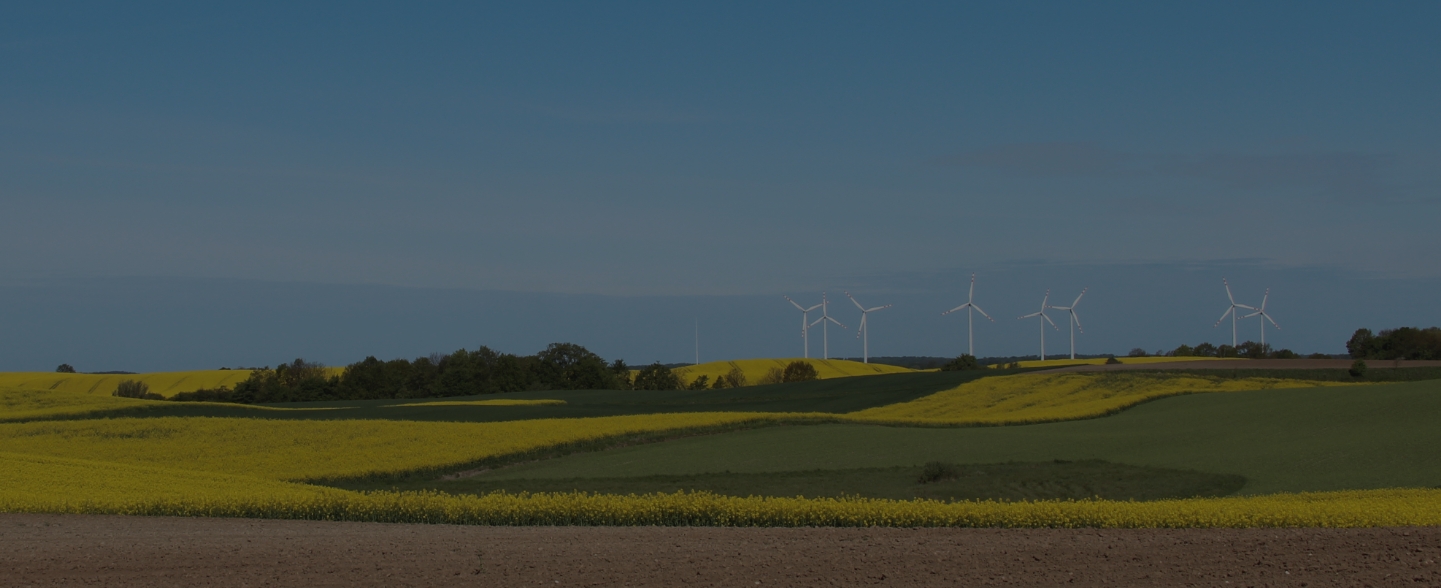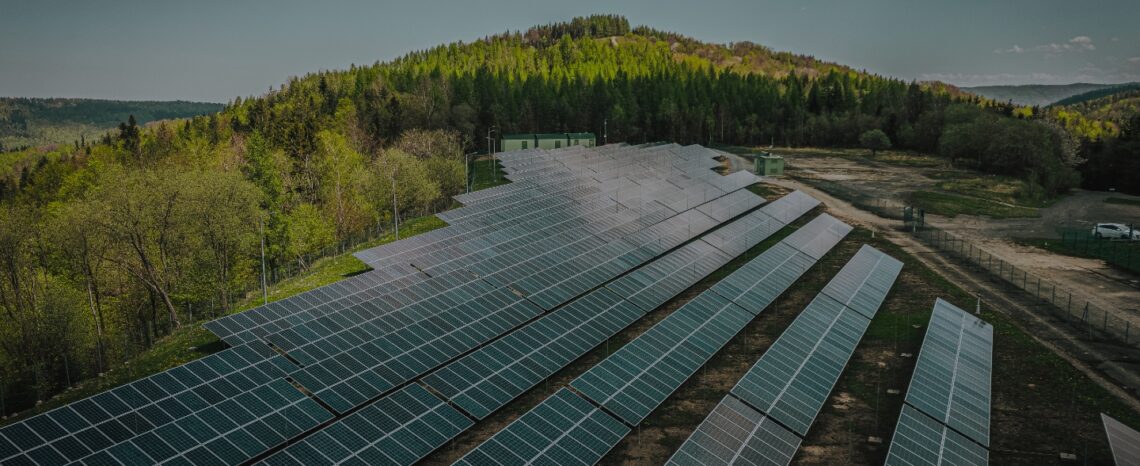-
Custom indicator
-
201-2
-
103 (custom indicator)
Renewable assets are a key element of the energy transition, one that leads to lower CO2 emissions and thus a higher share of renewable energy sources in the National Power System.
PGE Group’s commitment to reducing its impact on the environment and to responsibly using natural resources is also confirmed by our pro-environmental investments. In 2021 alone, PGE Group companies spent nearly PLN 2.2 billion on environmental protection investments, with the following investments directly concerning decarbonisation:
The remainder of the expenditures are investments related in particular to adapting the generating assets to the requirements of the BAT Conclusions and modernisation and restoration investments related to increasing the operating efficiency of the assets.
Decarbonisation of the generation portfolio
PGE Group’s long-term strategic aspiration is to supply 100% of energy from renewable sources to customers by 2050, which will be possible through:
- construction of offshore wind farms,
- implementation of the PV program,
- development of the onshore wind portfolio,
- energy storage program.
The implementation of RES projects will contribute to the diversification of PGE Group’s fuel mix, an increase in installed capacity in renewable energy sources, and thus to the implementation of the EU climate policy.
PGE Group is developing an Offshore Wind Farms Program (Offshore Program). By 2030, PGE Group will have built 2.5 GW of offshore wind farms under a strategic partnership with Denmark-based Ørsted. The Baltica 2 and Baltica 3 farms will be the largest offshore wind investments in the Baltic Sea. Another offshore wind farm, Baltica 1, with a capacity of 0.9 GW, is to be put into service after 2030. Taking account of the scale of planned investments, PGE Group intends to build up its capacities to independently operate and maintain its offshore wind farms. In a longer perspective, the construction of subsequent offshore wind farms is also planned. PGE intends to own offshore wind farms with a capacity of at least 6.5 GW by 2040. Further projects are planned to be implemented by PGE on its own or with selected partners.
PGE Group has a program for the development of photovoltaic assets, where the strategic goal is to achieve an additional 3 GW of solar power capacity by 2030 and to ensure that PGE Group is a leader in the development of photovoltaics in Poland. In 2021, PGE Energia Odnawialna was intensively involved in the development of its own photovoltaic farms, as part of which PGE Group has obtained building permit decisions for nearly 200 MW of PV capacity. PGE Group also actively participated in RES auctions which contribute to the economic feasibility of implemented projects. In the first half of the year, 19 projects won with a total capacity of approx. 18 MW, and in the second half – 3 projects with a capacity of up to 1 MW and one large project – PV Augustynka with a target capacity of 25 MW. The projects that obtained auction support will be put into operation already at the turn of 2022 and 2023. In addition, having secured all administrative decisions, the Group has started preparing tender procedures for the following projects: PV Gutki (12 MW), PV Huszlew (13 MW) and PV Jeziórko (100 MW). These assets will be built in 2022 and 2023.
As part of the program to develop photovoltaics at PGE Group, preparations for the first stage of the construction of PV farms were continued at the Bełchatów power plant. These farms are to be built in the following areas of: Ashes Reservoir, Reservoir No. 5 and Szczerców Mountain, which requires, first of all, reclamation, changes to the Conditions Study and Local Spatial Development Plans, as well as obtaining all administrative decisions.
PGE Group is also preparing to develop onshore wind farms. According to the strategy, PGE Group’s objective for the onshore wind area is to build an additional 1 GW of capacity in onshore wind farms by 2030. The Group’s current investment portfolio includes projects with a total capacity of approx. 200 MW, including: FW Lotnisko II, FW Karnice III, FW Bukowo, FW Resko III. However, their further development depends on the date of entry into force of the law liberalising the distance law, in particular the relaxation of the so-called “10H” condition. In a positive scenario, these wind farms will possibly be put into operation in 2026-2029.
Between 2018 and 2021, PGE Energia Odnawialna implemented a pilot project co-financed by the Intelligent Development Operational Program called “Energy storage adapting PV farm for work in smart grids.” The project involved the construction of a battery-based energy storage facility with a power rating of 550 kW and a total capacity of over 1 000 kWh, integrated with an existing 500 kW photovoltaic farm on Góra Żar in the Bielsko district. The goal of the project was to verify the technical feasibility of providing auxiliary services to the local distribution system operator. Currently, the project is in the process of clearing the grant and the infrastructure is being adapted to work in the energy price arbitrage function.
In 2021, PGE Dystrybucja implemented a pilot project called “Innovative network services to improve the quality and reliability of electricity supply.” Tests were conducted as part of the project on various modes of operation of the energy storage facility with a power rating of 2.1 MW and storage capacity of 4.2 MWh, operating in the distribution grid, including the possibility of its independent operation as a temporary power supply source in the n-1 and n-2 states. The facility is situated and connected at the 110/30/15 kV Rzepedź substation. Its functionality includes improving the reliability of power supply to consumers in Komańcza and Rzepedź. The tests confirmed the correct operation of the energy storage facility and maintenance of power quality parameters in compliance with the applicable regulations. The pilot energy storage system in Rzepedź will serve to develop solutions for energy storage projects related to power quality and reliability of PGE Dystrybucja’s distribution grid operation.
PGE Group is analysing further projects concerning the development of energy storage systems. The aspirations expressed in PGE Group’s strategy assume the construction of 800 MW of storage capacities by 2030. The Group currently sees potential in developing electrochemical energy storage facilities. In 2021, PGE obtained connection terms for an energy storage system with a capacity of over 200 MW, which will operate in a hybrid set-up with the Żarnowiec pumped storage hydropower plant. In addition, works are being carried out on a project involving the construction of 50 distributed energy storage facilities connected to 110 kV/15 kV substations (the so-called main supply points) in PGE Dystrybucja’s coverage area. The total capacity of these energy storage systems is 270 MW. At the same time, the Group recognises opportunities in developing pumped storage hydropower plants, which play an important role in the National Power System. Pumped storage units also perform energy storage functions. These investments are at the stage of analysis, business model development and pre-project documentation. Their implementation depends on achieving appropriate economic feasibility and securing sources of financing.
PGE Group’s business strategy adopted in 2020 sets a low- and zero-emission objective for the district heating area. The key actions undertaken by PGE that will contribute to the achievement of these goals above all include investments in the area of new gas-fired generating sources and thermal waste-to-energy systems as well as the use of renewable energy as a source of district heat.
In the second half of 2021, an asset decarbonisation plan was also developed for PGE Energia Ciepła in response to the objectives set out in PGE Group’s business strategy. It has also been incorporated into the Group’s Strategy Implementation Plan in the District Heating segment. The Decarbonisation Plan encompasses development and implementation of investment programs in alignment with the assumed strategic objectives for individual locations of PGE Energia Ciepła. Rebuilding generation capacities with the use of new low- or zero-emission generating units should be completed by 2030, and climate neutrality would be achieved by 2050. To this end, PGE Energia Ciepła is gradually replacing old coal-fired sources with new low-emission sources fired with gas and oil, taking into account the possibility of using hydrogen or ammonia in the future, as such fuel becomes available. The new generating units will be characterised by greater operational flexibility and reliability. In 2023-2029 most of PGE Energia Ciepła’s locations will feature installations that result in a total or considerable withdrawal from coal fuel. The coal phase-out is first planned in: Zgierz, Kielce, Lublin, Rzeszów and Gorzów Wielkopolski, followed by CHP plants in Bydgoszcz, Siechnice near Wrocław, Gdynia and Gdańsk. Gas, municipal waste, biomass, waste heat and renewable energy will be used to produce heat in the new and modernised heat generation units.
The key investment projects in this area especially include:
- construction of new gas-fired cogeneration sources
PGE Energia Ciepła is also currently implementing investment projects to build new gas-fired cogeneration sources in Siechnice, Bydgoszcz and Zgierz. The following locations are currently working on preparing similar projects using gas fuel: Gdynia, Gdańsk, Kraków;
- construction of new reserve and peak load boiler plants
At the turn of 2021 and 2022, a new peak load boiler plant with a capacity of 130 MW was put into service in Gdańsk, which consists of oil and gas boilers and modern electrode boilers powered by electricity. The use of electrode boiler technology at the Gdańsk CHP is an innovative solution in Poland. Furthermore, the construction of new peak load and reserve boiler plants started at the end of 2021 at six other locations, i.e. in Gorzów Wielkopolski, Lublin, Rzeszów, Kielce, Gdynia and Bydgoszcz, with a total capacity of approx. 743 MW, in order to replace the old coal-fired boilers.
PGE Group also owns a waste-to-energy incinerator system in Rzeszów. This technology is safe for the environment, modern and tested in over 300 cities around the world. Thanks to the use of state-of-the-art filters, the incinerator meets the strictest EU requirements concerning environmental protection. This system is expected to be expanded by a second technological line.
PGE Energia Ciepła is also implementing projects with a longer time horizon as part of dedicated programs for the development of the existing generating assets in Kraków, Gdańsk and Wrocław. These are expected to be completed by 2030.
In implementing PGE Group’s strategy, the development and investment plans that are being prepared take into account the deployment of low-emission technologies and ultimately the achievement of climate neutrality within an assumed time horizon. The assumptions for these PGE Group projects are drafted on the basis of analysis of potential regulatory trends, also in cooperation with industry organisations on the national and EU level. The development projects being analysed also consider the application of technology enabling the co-firing of hydrogen, which in the long term offers an opportunity to significantly reduce CO2 emissions in cogeneration systems.
Reducing greenhouse gas emissions from conventional energy generation
Irrespective of investments related to the build-up of new RES capacities, which are to result in a shift of the generating mix to zero and low-emission generation, PGE Group is systematically working on reducing greenhouse gas emissions in its existing conventional units. Unit carbon dioxide emissions are being systematically reduced as generating assets are modernised and development investments are carried out.
Considerable capital expenditures are directed at this purpose every year. Combustion processes are optimised and solutions are introduced to improve generating efficiency, increase fuel and raw material use efficiency and reduce the energy intensity of generation processes and own needs.
The Bełchatów plant is a major greenhouse gas emitter (CO2). This is due to the fact that it is the largest unit in Poland and the world producing electricity from lignite, which causes emissions to accumulate in one place and reach significant absolute values.
New units 5 and 6 in the Opole plant support the process of limiting greenhouse gas emissions as these more efficient assets are started-up first before older units. In effect, at a given level of supply (capacity of installed units) and a stable level of demand in the country (demand for capacity), units with lower CO2 emissions displace higher emission units. These actions contribute to the reduction of emissions from the national energy industry. In 2021, the emission factor for units 1-4 at the Opole plant was 0.897 Mg/MWh and for units 5-6 this was 0.731 Mg/MWh.
At the Turów plant, the reduction of carbon dioxide emissions was achieved by increasing the efficiency of electricity generation of units 1-3 and launching a highly efficient unit 7 in 2021. This unit meets strict environmental standards and is adapted to the emission requirements resulting from BAT conclusions, which address the best and most environmentally friendly technologies available.
At the Dolna Odra plant, there has been a gradual reduction in the amount of coal burned since 2013. At the same time, biomass combustion was introduced in 2004, replacing part of the coal that would have to be burned in the absence of biomass combustion. Modernisations of units at the branch have been aimed at increasing the efficiency of electricity generation and lowering emissions, including CO2.
The branch’s transition towards climate neutrality is supported by projects using gas as a transition fuel. A project is in progress to build two gas-fired units, with a capacity of approx. 700 MW each, making it the largest and most modern gas-fired power plant in Poland. High-methane natural gas is the primary energy source for the selected generation technology. Worth nearly PLN 5 billion, the investment will be completed before the end of 2023. As of the end of December 2021, the overall project progress, including design works, production and delivery of equipment and works on the construction site exceeded 50%.
The average CO2 emission of the new units will be more than two times lower than the current average emission of energy generating assets in the National Power System (NPS). Energy generation using the new units will deliver a reduction in CO2 emissions in the NPS of approx. 2-3 million tonnes per year. The emission reduction is achieved not only due to a change of fuel to gas but also thanks to the application of the latest generation of gas turbine, which has an energy generation efficiency in excess of 63%. For comparison, gas-and-steam plants with turbines from the previous generation have an efficiency of 59-60%, while most modern coal units – approx. 46%.
Increase in connection capacity
The majority of investments in the area of electricity distribution in 2021 concerned the modernisation and development of the medium- and low-voltage electricity grid and transformer stations. These investments will increase the connection capacity of the distribution grid, including for renewable energy sources, as well as improve electricity supply interruption rates and further reduce grid losses. The energy efficiency of electricity equipment is increased by replacing transformers and procuring metering devices, including modern electricity meters. Renewable energy sources (RES) are an important element of sustainability, with measurable economic and environmental effects. In 2021, PGE Dystrybucja connected 141 000 household photovoltaic systems, with a total capacity of 996 MW, to its grid.
In 2021, 234 RES sources with a unit capacity of over 50 kW, i.e. sources that are not classified as micro-installations, also appeared in the PGE Dystrybucja grid, including:
These initiatives are important from the point of view of the expected reductions in energy output from conventional sources and are part of positive efforts in the context of systemic climate change, with limited impact on PGE’s own emissions.
Transparency on climate-related disclosures
In July 2021, in response to the expectations of investors for whom environmental impact management is increasingly important, PGE Group took part in a voluntary, international Carbon Disclosure Project (CDP) study on climate change. CDP is a not-for-profit organisation that operates a global disclosure system on sustainable management by companies and cities. PGE participated in the survey for the first time. In the area of climate change management, the company received a grade of D (disclosure), on a scale of A to F. PGE’s disclosure data is available by logging into the platform at http://www.cdp.net

Participation in the study allowed PGE Group to acquire new competences that will serve to better define PGE’s development plans and to report on non-financial issues in an even more advanced way.





